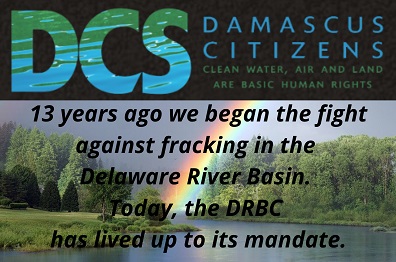
Delaware River Basin Commission Votes to BAN Fracking in the Watershed
February 25, 2021
How Exxon Is Being Forced To Accept The Reality Of Bad Fossil Fuel Investments
March 3, 2021By Kristina Marusic, Environmental Health News, March 1, 2021
This is part 1 of our 4-part series, “Fractured,” an investigation of fracking chemicals in the air, water, and people of western Pennsylvania.
How many more families like these are there out there?
Download the full Part 1 as a pdf
WASHINGTON COUNTY, Pa.—In the summer of 2019, 13-year-old Gunnar Bjornson spent most days banging on his drums, playing video games, antagonizing his siblings, wandering outdoors, and scrounging for junk food in his home’s mostly healthy kitchen.
Gunnar is tan and blond with bright blue eyes and all the charisma required to survive being the younger of two middle children in a big family. He’s the household entertainer, constantly cracking jokes and falling into contagious giggling fits.
Gunnar lives with his mom, dad, older brothers and younger sister about 35 miles south of Pittsburgh in the aptly-named community of Scenery Hill, where narrow country roads wind through shady woods that open up onto hilltop vistas of rolling fields. The hills are peppered with farmhouses, fruit orchards, and fields of corn and squash. The roadsides are punctuated by little white churches, farm stands, and dirt driveways marked with hand-painted signs like “The Jones’s” and “Hidden Family Farm.”
Scenery Hill is in Washington County, the most heavily fracked county in Pennsylvania, with about 1,584 wells in its 861 square miles, so the idyllic country roads are also flanked with signs directing oil and gas well traffic: “No well traffic beyond this point,” “Staging area —->,” “Truck traffic: No engine breaks,” and ads that read, “We buy mineral rights!”
August 19, 2019, was a typical day for Gunnar—he played drums, took the dog outside, and argued and joked with his siblings. But unbeknownst to him and his family, Gunnar had a number of harmful chemicals coursing through his body.
A urine sample taken from Gunnar that day contained 11 harmful industrial chemicals, including benzene, toluene, naphthalene, and lesser-known chemicals linked to a range of health effects including respiratory and gastrointestinal problems, skin and eye irritation, organ damage, reproductive harm, and increased cancer risk.
These chemicals are found in things like gasoline, pesticides, industrial solvents and glues, varnishes, paints, car exhaust, industrial emissions, and tobacco smoke. They’re also commonly detected in air emissions from fracking wells.
Fracking, another name for hydraulic fracturing, is the process of extracting oil and gas from the Earth by drilling deep wells and injecting liquid at high pressure. Over the last decade, fracking has transformed the U.S. energy industry—total crude oil production more than doubled from 2010 to 2020, and natural gas, once in short supply, is now so over-abundant it’s exported overseas. But in that same time period, concerns about the health effects of fracking have escalated.
In Texas, researchers found that babies born near frequent flaring—the burning off of excess natural gas from fracking wells—are 50 percent more likely to be premature. In Colorado, the state Department of Health found that people living near fracking sites face elevated risk of nosebleeds, headaches, breathing trouble, and dizziness. In Pennsylvania, researchers found that people living near fracking face increased rates of infant mortality, depression, and hospitalizations for skin and urinary issues. Studies of fracking communities throughout the country have found that living near fracking wells increases the risk of premature births, high-risk pregnancies, asthma, migraines, fatigue, nasal and sinus symptoms, skin disorders and heart failure; and laboratory studies have linked chemicals used in fracking fluid to endocrine disruption—which can cause hormone imbalance, reproductive harm, early puberty, brain and behavior problems, improper immune function, and cancer.
“We have enough evidence at this point that these health impacts should be of serious concern to policymakers interested in protecting public health,” Irena Gorski Steiner, an environmental epidemiology doctoral candidate at the Johns Hopkins Bloomberg School of Public Health, told Environmental Health News (EHN).
EHN has reported on this increasing evidence of fracking’s impacts on human health for years. But we saw a gap in the science—almost no one was checking to see if harmful fracking chemicals were actually in the bodies of people living near wells. In 2019, EHN collected urine samples, along with air and water samples, from five families in southwestern Pennsylvania, including the Bower-Bjornsons, and had them analyzed for chemicals associated with fracking. We found:
- Chemicals in water, air and urine samples that are linked to a wide range of harmful health impacts
- Cancer-causing chemicals in air samples at levels that exceeded recommended safety thresholds
- Biomarkers (also referred to as breakdown products or metabolites) for harmful chemicals like ethylbenzene, styrene, and toluene in the bodies of southwestern Pennsylvanians at levels significantly higher than the average American. For example, we found a biomarker for toluene in a 9 year-old boy living near fracking wells at a level 91 times as high as the level seen in the average American
- Families that live closer to fracking wells had higher levels of chemicals like 1,2,3-trimethylbenzene, 2-heptanone, and naphthalene in their urine than families that live further away. Exposure to these compounds is linked to skin, eye, and respiratory issues, gastrointestinal illness, liver problems, neurological issues, immune system and kidney damage, developmental issues, hormone disruption, and increased cancer risk.
We collected a total of 17 urine samples from Gunnar and his family during the summer of 2019. Some chemical exposures aren’t detectable in urine if the body has already broken them down, so we also looked for breakdown products, or biomarkers, of harmful chemicals. The presence of these chemicals and their biomarkers in urine generally reflect exposures that occurred within a few days of sampling.
Some of these biomarkers have sources other than these chemicals. For example, trans, trans-muconic acid is a biomarker for benzene, but eating sorbic acid (a common food preservative) also produces trans, trans-muconic acid. Hippuric acid is a biomarker for toluene, which can damage the nervous system or kidneys, but it’s also formed when the body processes tea, wine, and certain fruit juices. As a result, we expect everyone to have a certain level of these compounds in their bodies. To determine whether the levels we saw in Pennsylvania families were normal, we compared the levels of these biomarkers in the families we tested to the levels seen in the average American using U.S. Centers for Disease Control and Prevention (CDC)’s National Health and Nutrition Examination Survey.
More than half of the family’s samples exceeded the U.S. 95th percentile for phenylglyoxylic acid, a biomarker for ethylbenzene and styrene, and 41 percent of the family’s samples exceeded the U.S. 95th percentile for hippuric acid and trans, trans-muconic acid—biomarkers for toluene and benzene, respectively. Exposure to these compounds is linked to skin, lung, and eye irritation; central nervous system, liver and kidney damage; and cancer.
Gunnar’s urine sample contained a level of mandelic acid, a biomarker for ethylbenzene and styrene, 55 times as high as the average American (according to CDC data) and higher than levels typically seen in the average adult cigarette smoker.
Mandelic acid isn’t itself harmful—it’s used in small amounts in some medicines and skincare products—but exposure to ethylbenzene and styrene is linked to skin, eye, and respiratory tract irritation, reproductive harm, endocrine disruption, and increased cancer risk.
A few years ago, when drilling began simultaneously at three of the fracking well pads within a few miles of the Bower-Bjornson home, Gunnar frequently got nosebleeds that lasted up to 20 minutes and drained all the color from his face. Sometimes he’d cough up blood clots afterwards. Once, he recalled, this happened at school and he asked his teacher not to tell his mom about it, knowing it worried her.
Gunnar still gets nosebleeds, but they’re less frequent now that all three of those wells are in production—meaning they’re no longer actively drilled and fracked, but are producing oil and gas. They aren’t the only three wells nearby. The family’s home is within five miles of at least 25 active well pads, many of which contain multiple wells. The nearest pad, owned by Pittsburgh-headquartered EQT Corporation—the largest producer of natural gas in the country—is home to 10 operational wells.
There’s no way to know for certain whether Gunnar and his family’s exposures came from fracking emissions. We looked for other potential sources of exposure by visiting their home, asking them to complete an extensive survey, and recording their activities around the time of our sampling.
On the days we collected samples, the family generally engaged in normal summer activities—running errands, working in the garden, and lounging around the house. When we observed other potential sources of exposure, they’re noted in our reporting. To our knowledge, the Bower-Bjornsons did not smoke cigarettes, spend hours in traffic, or consume vast enough quantities of foods or products containing these compounds to entirely explain why their levels for these compounds were so much higher than they are in most Americans.
The biggest difference between this family and the average American: their home’s proximity to fracking wells.
“I sort of knew we were being exposed here,” Gunnar’s mom, Lois Bower-Bjornson, told EHN, “but I had no idea it was at this level. Seeing this on paper was a real eye opener.”
We found harmful chemicals in Lois’s urine samples, too—on July 23, 2019, her sample contained the highest level of naphthalene detected in our study. There isn’t any national data available to compare her level against, but the level of naphthalene detected in Lois’s urine sample that day was more than 15 times higher than the median level we detected in other southwestern Pennsylvania residents.
“When we do air samples and we do urine samples we don’t usually find naphthalene unless there’s an industrial source releasing naphthalene very close by,” Wilma Subra, an environmental scientist and founder of the environmental consulting firm the Subra Company, told EHN. Through her firm, Subra has spent decades conducting studies similar to EHN’s in communities facing toxic exposures. She also previously served as vice-chair of the Environmental Protection Agency’s (EPA) National Advisory Council for Environmental Policy and received a MacArthur fellowship for her work related to environmental exposures.
We all face myriad exposures to toxic chemicals every day—a byproduct of living in a modern world replete with vehicles, heavy industry, plastics, and pesticides. EHN’s pilot study was small, and more research is needed to tease out fracking exposures and trends. Still, the exposures we found in Gunnar, his family, and four other southwestern Pennsylvania households suggest that the approximately 18 million Americans who live within a mile of an active oil and gas well might face above-average levels of exposure to chemicals that are harming them.
For many of those families, including the Bower-Bjornsons, the industry’s proximity to their homes has not only led to anxiety about their health, but also damaged their quality of life, and made them feel disempowered and neglected by the federal and state agencies that are supposed to protect them.
A dream that became a nightmare
Continue reading on Environmental Health News
Download the full Part 1 as a pdf




